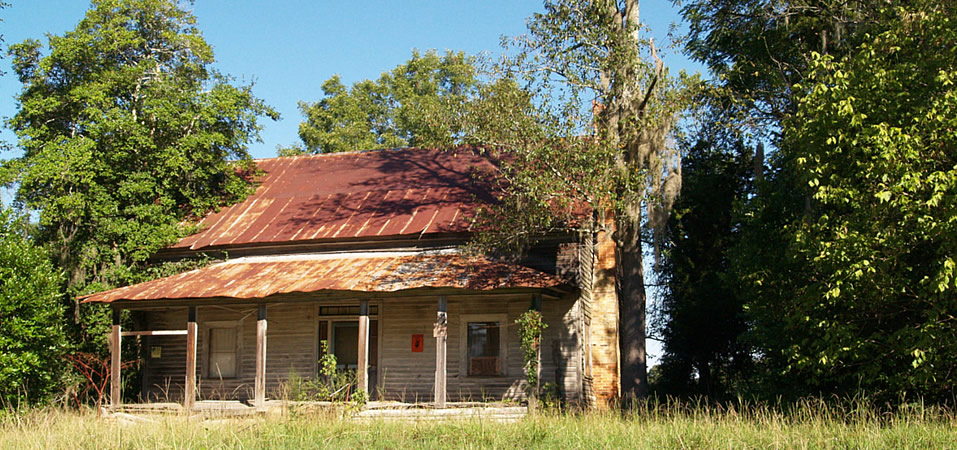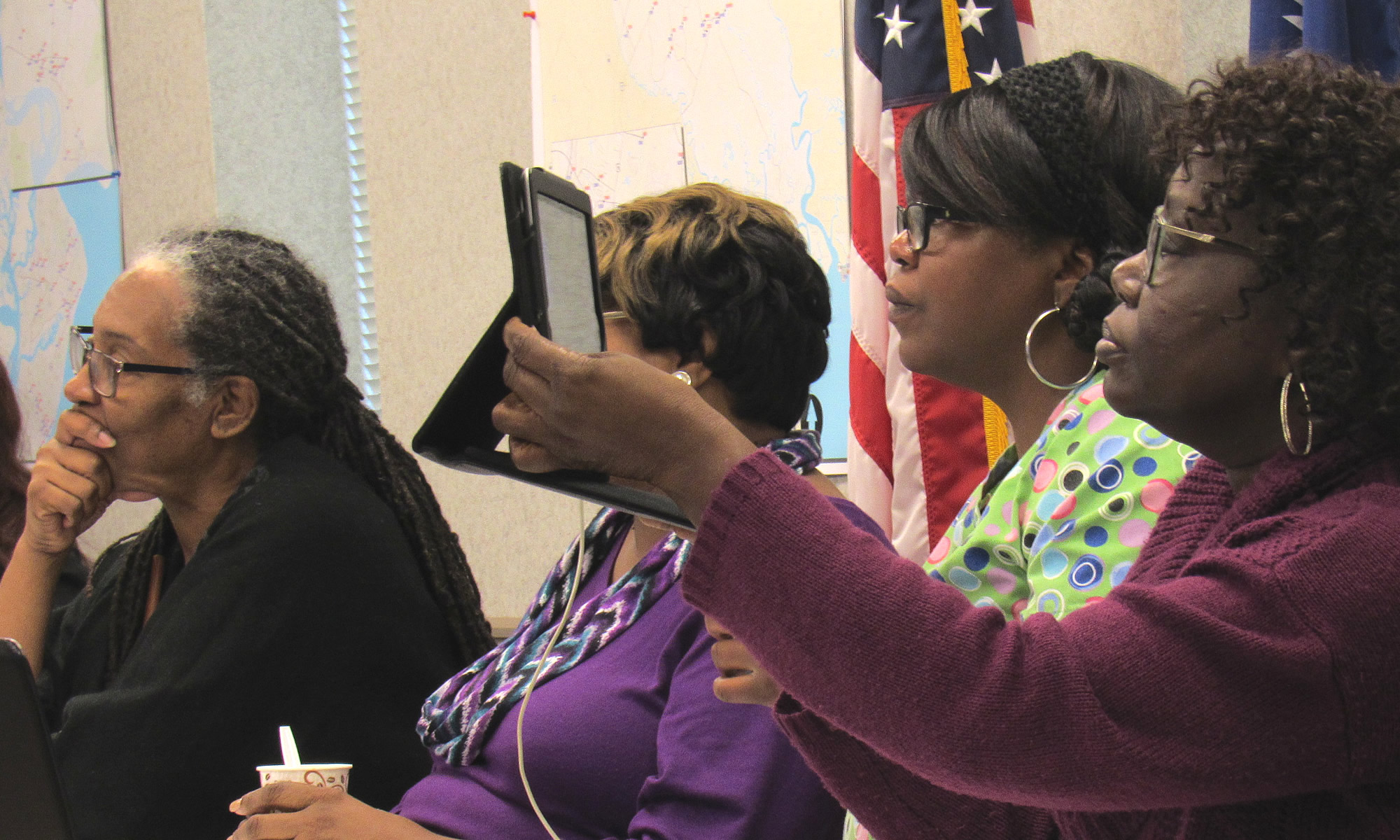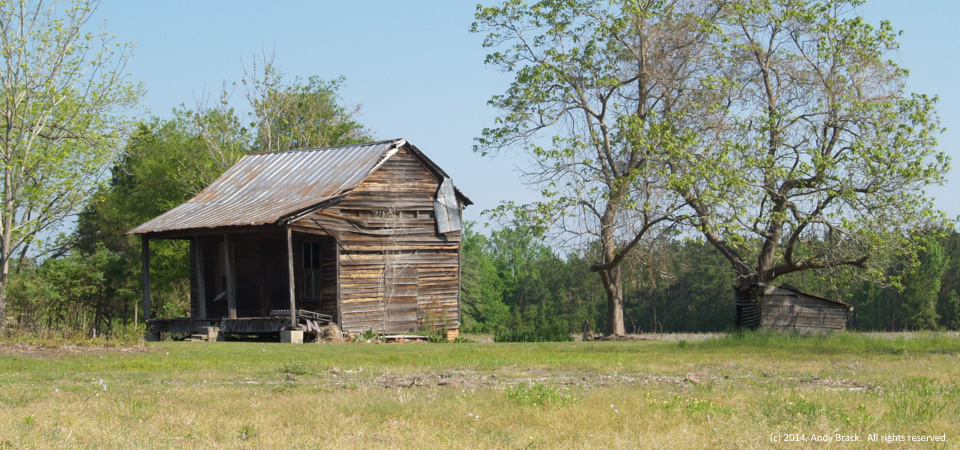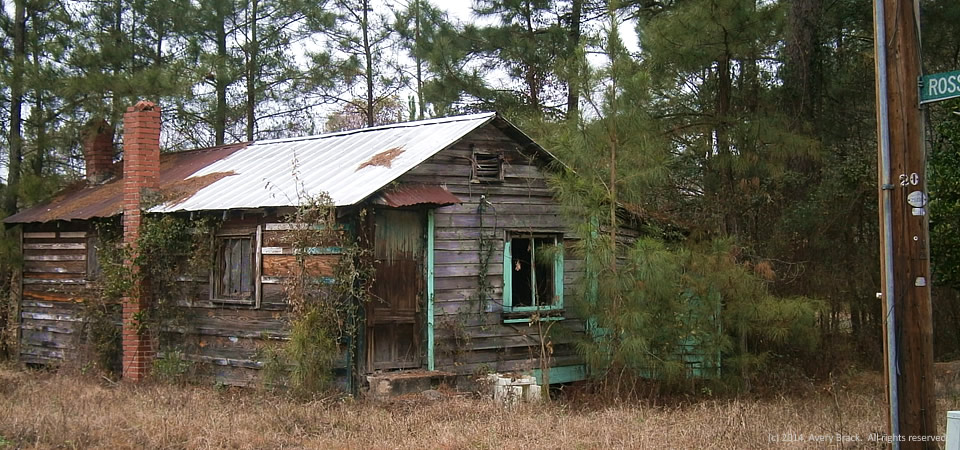
This old, rusting vernacular house east of Sycamore, S.C., is in the middle of the six-county impoverished area that the Center for a Better South has worked with area and state leaders to apply for a federal Promise Zone designation. Read about our work here.
While the farmhouse seems to be unoccupied, but may be used as a hunting cabin, it’s easy to see good workmanship in the framing. Structures like this dot the countryside throughout the Southern Crescent, a reminder of tenant farming of days gone by.
Sycamore, a village to the west of about 180 people, is about 60 percent white with a 35 percent black community of residents. Unlike the whole of Allendale County with its almost 40 percent poverty rate, poverty is comparatively low at 10 percent in Sycamore.
- More about Allendale County from QuickFacts from the U.S. Census.
- More about Sycamore.
Photo by Andy Brack, Center for a Better South, Oct. 1, 2014. All rights reserved.



